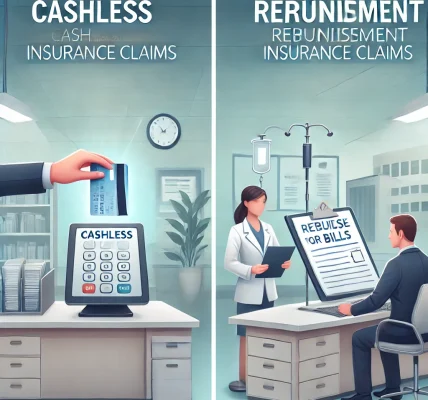Introduction
The insurance industry has undergone a significant transformation with the advent of technology. One of the most crucial aspects of this evolution is the modernization of the insurance claims process. Traditional claims handling was often slow, manual, and prone to errors, leading to customer dissatisfaction and financial inefficiencies. However, with the integration of advanced technologies such as artificial intelligence (AI), machine learning (ML), blockchain, and automation, the claims process has become faster, more accurate, and customer-centric.
In this blog, we will explore how technology is reshaping the insurance claims process, the key benefits for both insurers and policyholders, and the future trends that will further revolutionize the industry.
The Challenges of Traditional Insurance Claims Processing
Before diving into how technology is transforming the claims process, it’s essential to understand the limitations of traditional methods:
- Manual Paperwork: Lengthy and time-consuming documentation processes increased delays and inefficiencies.
- Fraudulent Claims: Lack of proper verification methods made fraud detection difficult.
- Human Errors: Manual data entry and analysis increased the chances of errors, leading to disputes and financial losses.
- Long Processing Times: The dependency on human evaluation led to delays, frustrating customers.
- Lack of Transparency: Customers often had little to no visibility into the status of their claims, causing dissatisfaction.
With these challenges in mind, the need for a more efficient, transparent, and technology-driven claims process became evident.
Key Technologies Transforming the Insurance Claims Process
1. Artificial Intelligence (AI) & Machine Learning (ML)
AI and ML have significantly improved the efficiency of claims processing by automating decision-making, detecting fraud, and personalizing customer interactions.
- Automated Claim Assessment: AI-powered systems analyze claims data in real-time, determining eligibility and estimating damages without human intervention.
- Fraud Detection: Machine learning algorithms detect suspicious patterns in claims, reducing fraudulent activities.
- Chatbots & Virtual Assistants: AI-powered chatbots assist customers by providing instant claim status updates and answering queries.
2. Blockchain Technology
Blockchain ensures security, transparency, and efficiency in claims processing by creating an immutable ledger of transactions.
- Tamper-Proof Records: Every transaction is recorded securely, preventing fraudulent alterations.
- Smart Contracts: These self-executing contracts automate claims payouts based on predefined conditions.
- Decentralized Data Sharing: Insurers can securely share customer data without compromising privacy.
3. Internet of Things (IoT)
IoT devices, such as telematics in vehicles and smart home sensors, provide real-time data that enhances claims assessment.
- Telematics in Auto Insurance: Devices installed in vehicles monitor driving behavior, helping insurers accurately assess accident claims.
- Smart Home Devices: Sensors detect damages like water leaks or fire hazards, triggering faster claims processing.
- Wearables in Health Insurance: Fitness trackers provide real-time health data, helping insurers evaluate claims more accurately.
4. Robotic Process Automation (RPA)
RPA automates repetitive tasks such as data entry, document verification, and claims validation, improving speed and accuracy.
- Document Processing: RPA extracts data from claim forms, reducing manual work.
- Claims Triage: Automates claim classification based on severity and urgency.
- Workflow Automation: Ensures seamless coordination between different departments in the claims process.
5. Big Data Analytics
Data-driven decision-making helps insurers predict risks, personalize claims handling, and enhance customer experiences.
- Predictive Analytics: Helps insurers assess potential claim risks and set appropriate policy premiums.
- Customer Behavior Analysis: Identifies customer preferences and customizes insurance products accordingly.
- Efficient Resource Allocation: Enables better allocation of human and financial resources based on data insights.
Benefits of Technology-Driven Insurance Claims Processing
1. Faster Claims Settlement
Automated processes significantly reduce claim settlement times, leading to improved customer satisfaction.
2. Enhanced Fraud Detection & Prevention
AI and blockchain help detect fraudulent claims early, saving insurers from financial losses.
3. Improved Accuracy & Reduced Errors
Automation minimizes human errors, ensuring accurate claim assessments and payouts.
4. Increased Transparency
Blockchain and AI-driven tracking systems provide customers with real-time updates on claim status.
5. Cost Reduction for Insurers
Automation reduces operational costs, allowing insurers to offer competitive premiums to customers.
6. Better Customer Experience
Self-service portals, AI chatbots, and faster claim settlements enhance customer satisfaction and trust.
Future Trends in Insurance Claims Processing
The future of insurance claims processing will continue to evolve with emerging technologies:
- Hyperautomation: Combining AI, ML, and RPA to fully automate claims from start to finish.
- Decentralized Insurance (DeFi): Using blockchain to create peer-to-peer insurance models.
- Augmented Reality (AR) & Virtual Reality (VR): AR/VR for remote claims assessment in property insurance.
- Voice & Biometric Authentication: Enhancing security in claims processing through voice recognition and biometrics.
- AI-Powered Personalized Policies: Insurers will offer dynamic policies based on real-time customer behavior analysis.
Conclusion
Technology has revolutionized the insurance claims process, making it more efficient, accurate, and customer-friendly. With advancements in AI, blockchain, IoT, and automation, insurers can streamline operations, reduce fraud, and enhance customer experiences. As technology continues to evolve, the future of insurance claims processing looks promising, benefiting both insurers and policyholders alike.




